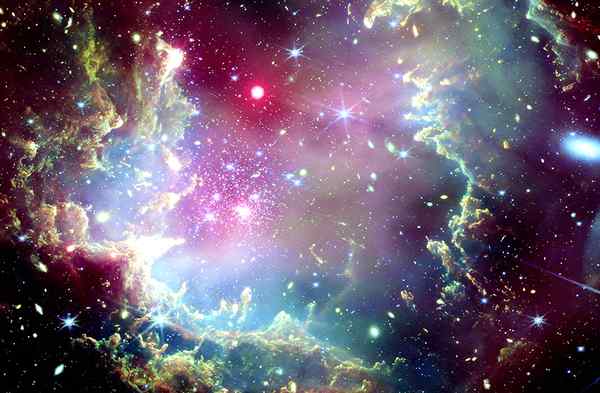Snow Leopard
- 07 Oct 2025
In News:
- A recent survey by the Wildlife Wing of the Himachal Pradesh Forest Department has revealed that the state now hosts 83 adult snow leopards, a notable increase from the 51 recorded in 2021.
- Conducted over one year with strong community participation, the assessment marks Himachal Pradesh as the first state in India to carry out a second state-wide snow leopard survey, providing a robust baseline for future conservation efforts.
About Snow Leopards (Panthera uncia):
- Known as the “ghost of the mountains”, snow leopards are large, elusive wild cats and serve as important indicator species for fragile high-altitude ecosystems.
- State Animal: Himachal Pradesh
- Distribution: Native to high mountains across 12 countries in Central and South Asia, including Afghanistan, China, India, Nepal, and Mongolia. In India, found in Western Himalayas (J&K, Ladakh, Himachal Pradesh, Uttarakhand) and Eastern Himalayas (Sikkim, Arunachal Pradesh).
- IUCN Status: Vulnerable (VU)
Key Characteristics:
- Physical Traits: Thick white-grey fur with dark rosettes for camouflage; powerful hind legs for leaping across rugged terrain.
- Diet: Carnivorous—feeds on blue sheep, Himalayan ibex, marmots, pikas, hares, and other high-altitude prey.
- Habitat & Territory: Prefers cold deserts and rocky slopes above 3,000 m, sometimes reaching 5,500 m; requires large territories (5–190 sq miles) due to low prey density.
- Behavior: Solitary and territorial, mostly nocturnal and elusive.
Survey Highlights:
- Conducted across six sites covering Himachal’s 26,000 sq km snow leopard habitat using camera traps.
- Snow leopards recorded in core areas such as Lahaul-Spiti, Kinnaur, and Pangi Valley, and also beyond protected areas like Kibber Wildlife Sanctuary, Great Himalayan National Park, Sechu Tuan Nala, and Asrang Wildlife Sanctuary.
- Prey and Biodiversity: Updated distribution maps for blue sheep, Himalayan ibex, musk deer, Himalayan wolves, brown bears, red foxes, leopards, and martens. First official sighting of Pallas’s cat in Kinnaur and rediscovery of the woolly flying squirrel in Lahaul.
Cyclone Shakhti
- 07 Oct 2025
In News:
Recently, the India Meteorological Department (IMD) confirmed the formation of Cyclone Shakhti over the northeast Arabian Sea. Named by Sri Lanka under the World Meteorological Organisation’s regional naming system, Shakhti is a tropical cyclonic storm forming approximately 340 km west of Dwarka, Gujarat.
Formation and Track:
The cyclone developed due to low-pressure systems over the warm Arabian Sea waters in early October 2025. IMD reports indicate:
- Shakhti intensified into a Cyclonic Storm (CS) on 3 October and was forecasted to become a Severe Cyclonic Storm (SCS) by 4 October.
- Initially moving west-northwest, it is likely to track west-southwest, reaching central parts of the north and adjoining central Arabian Sea by 5 October.
- A subsequent recurvature is expected, moving east-northeastward from 6 October.
Significance:
The occurrence of Cyclone Shakhti highlights the increasing cyclonic activity in the Arabian Sea, historically less active than the Bay of Bengal. Warmer sea surface temperatures have led to the rapid intensification of recent cyclones, including Tauktae (2021) and Biparjoy (2023), off India’s west coast.
Comparative Context:
- The Bay of Bengal experiences more cyclones due to semi-enclosed waters retaining warmth (29–30°C), abundant moisture from rivers and monsoon flows, and low-pressure pulses from Pacific typhoons.
- In contrast, the Arabian Sea is cooler, influenced by dry winds from Oman and Yemen, and lacks such external triggers, which traditionally limited cyclone intensity.
- Rising temperatures, however, are changing this pattern, making the Arabian Sea increasingly prone to severe cyclones.
Dhvani Missile
- 07 Oct 2025
In News:
India is on the verge of a historic breakthrough with the upcoming test of Dhvani, a cutting-edge hypersonic missile developed by the Defence Research and Development Organisation (DRDO). This missile positions India among an elite group of nations with hypersonic capabilities, including the United States, Russia, and China.
About Dhvani:
- Dhvani is being developed as a Hypersonic Glide Vehicle (HGV), capable of speeds exceeding Mach 5 (over 7,400 km/h).
- Unlike conventional missiles that follow predictable trajectories, Dhvani is launched to extreme altitudes and then glides toward its target with high maneuverability, making detection and interception extremely difficult. It is designed to strike both land-based and maritime targets with precision.
- Estimated ranges are 6,000 to 10,000 kilometers, potentially doubling the reach of India’s current Agni-V intercontinental ballistic missile.
Design and Technology:
- Dimensions: Approximately 9 meters long and 2.5 meters wide with a blended wing-body configuration.
- Heat Protection: Uses ultra-high-temperature ceramic composites to withstand 2,000–3,000°C during atmospheric reentry.
- Stealth Features: Angled surfaces and smooth contours reduce radar visibility.
- Indigenous Development: Built on technologies demonstrated by the Hypersonic Technology Demonstrator Vehicle (HSTDV), including scramjet propulsion and thermal shielding.
Strategic Implications:
The Dhvani missile significantly enhances India’s strategic deterrence, creating a technological edge in South Asia. Its ability to perform unpredictable maneuvers during the terminal phase renders most current missile defense systems ineffective, thereby deterring adversaries.
Global Context:
Dhvani is comparable to China’s DF-ZF, Russia’s Avangard, and U.S. programs such as Dark Eagle and HACM, which face developmental delays. India’s achievement demonstrates self-reliance in critical defense technologies and strengthens its capability for both regional security and global power projection.
Compressive Asphyxia

- 07 Oct 2025
In News:
The recent tragic stampede at a rally of TamilagaVetriKazhagam (TVK) in Velusamypuram, Tamil Nadu, resulted in 41 deaths, including nine children. Doctors have attributed most fatalities to compressive asphyxia, highlighting the dangers of overcrowded events in India.
What is Asphyxia?
Asphyxia, or asphyxiation, occurs when the body does not receive sufficient oxygen. Normally, respiration allows oxygen to circulate via blood to all cells while removing carbon dioxide. In asphyxia, inadequate oxygen can lead to unconsciousness, organ failure, or death.
Types of Asphyxia:
Medical literature classifies asphyxia into several types:
- Mechanical Asphyxia: Physical obstruction preventing normal breathing.
- Traumatic Asphyxia: Strong external force on the thoracic cavity causes blood to backflow to the brain.
- Perinatal Asphyxia: Insufficient oxygen before, during, or shortly after birth.
- Compressive Asphyxia: External pressure on the chest or abdomen prevents expansion of the lungs.
- Other Types: Include suffocation, chemical asphyxia, strangulation, and drowning.
Compressive Asphyxia in Crowds:
In large gatherings or stampedes, people can be pressed tightly against each other. The diaphragm, a key muscle for breathing, cannot contract effectively, preventing inhalation and exhalation. This leads to oxygen deprivation (hypoxia) and carbon dioxide buildup (hypercapnia), which can cause organ failure and death.
Crowd Density and Risk:
- Safe crowd density: up to 5 persons per square metre.
- Densities above 6–7 per square metre significantly increase the risk of compressive asphyxia.
- The UK’s Green Guide suggests a maximum of 4.7 persons per square metre for standing areas in public venues.
Preventive Measures:
To stay safe in crowds:
- Assess venue layout and crowd capacity.
- Be aware of weather conditions.
- Move with a partner and identify safe meeting points.
- Wear bright clothing and note all exit routes.
- Move diagonally or sideways to reach open spaces.
- Exit early if the situation feels unsafe.
Dark Stars

- 07 Oct 2025
In News:
Recent astronomical observations have provided evidence for the existence of “dark stars,” a hypothesized class of the earliest stars in the universe. Unlike conventional stars powered by nuclear fusion, dark stars are thought to derive their energy from dark matter annihilation.
What Are Dark Stars?
- Dark stars are believed to have existed in the early universe and may represent the first phase of stellar evolution. These stars are immense, potentially 400 to 200,000 times larger and 500 to 1,000 times more massive than the Sun. Despite their size, they are not very hot because their energy source is dark matter heating rather than nuclear fusion.
- Unlike ordinary stars, dark stars are giant, puffy clouds rather than compact objects. They could shine as brightly as an entire early galaxy, emitting gamma rays, neutrinos, and possibly antimatter, but remain largely invisible in visible light. This explains why they have remained undetected until recent observations.
Recent Discoveries:
Data from the James Webb Space Telescope (JWST) has identified four candidate dark stars whose light profiles align with theoretical predictions for supermassive dark stars. If confirmed, these findings could:
- Explain the presence of unusually bright objects in the early universe.
- Offer insights into the formation of the first supermassive black holes, a longstanding puzzle in cosmology.
Significance for Cosmology:
Understanding dark stars provides crucial insights into:
- The role of dark matter in early stellar evolution.
- The transition from the first stars to the formation of galaxies and black holes.
- The evolution of the universe’s luminous structure in its formative stages.
